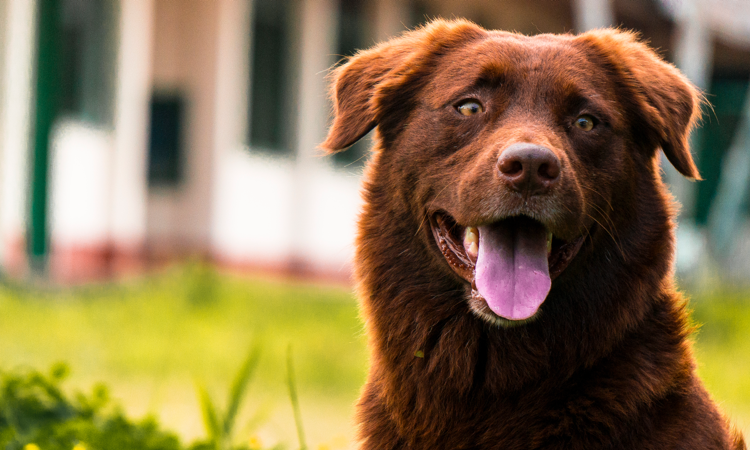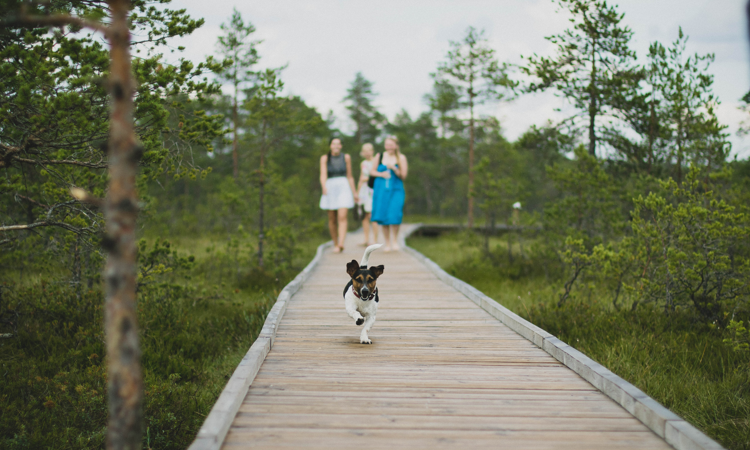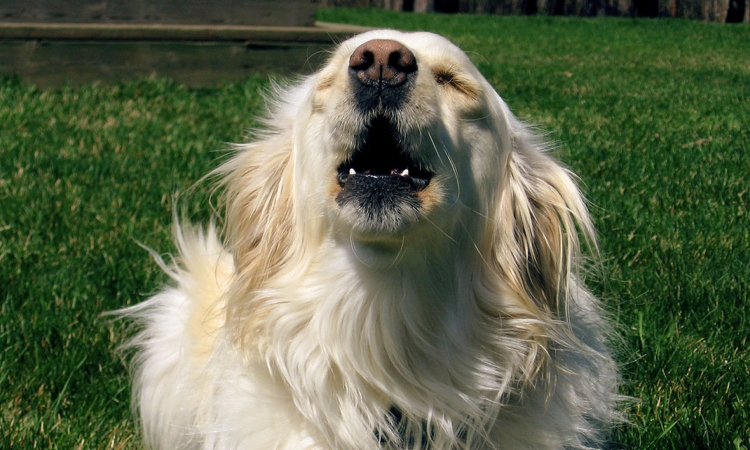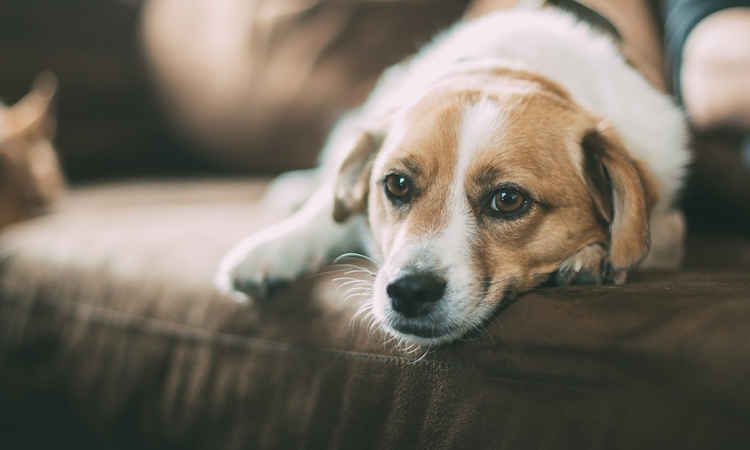As a puppy, your dog needs a lot of care. Training, obedience, socialisation are all key aspects to consider to make for a well-rounded adult dog. So what happens when they grow up and enter the adult phase of life? The fun certainly doesn’t have to stop there. Some people will claim you can’t train an adult dog, but in fact grown up dogs can be trained and will likely enjoy the experience too. Read on to find out some basic training tips for your adult dog as well as how to teach an older dog all of the things they need to know.
Going back to training basics for your adult dog

If you dog is a rescue, missed out on puppy class or they’ve just had a relapse in good-dog behaviour, you may want to revisit the basics.
With time, patience and effort your old dog can easily learn new tricks and become a well-rounded pooch who’s keen to please.
Here are some good tips to remember when training your adult dog:
- Adult dogs are usually a bit more clever and wiser, so learn much more from our behaviour than from being told what to do. Positive associations (and negative) can be built very easily which makes it important to only ever reward or reinforce (through praise, attention and so on) the behaviour you actually want to see.
- Adult dogs tend to thrive from routine. Keep feeding times regular and ensure your dog knows when to expect their regular activities like walks and playtime.
- Although your adult dog is likely to have better focus than a puppy, still keep training sessions short and fun.
Here are some of the basic commands you may wish to teach or refresh them on:
Teach an older dog to sit
- Hold a treat in your hand in front of your dog’s nose and slowly move your hand upwards.
- Your dog’s nose should naturally follow the treat, guiding them into a sit position. When their hind quarters hits the floor, release the treat and say “good”.
- Practice this a few times, then begin introducing the word “sit” as your dog’s bum touches the floor.
- Now try saying “sit” and see if your dog can sit without having to use the treat as a guide. If they sit on command, give them a treat and praise them.
Teach an older dog to lie down
- Ask your dog to sit.
- Hold a treat in front of them and lower it to the ground. Their nose should follow.
- As their tummy touches the floor, give them the treat.
- Practice this and as they begin to do it more quickly, say “lay” as they are touching the floor.
- Next, try saying “lay” and reward your dog each time they lay on the floor on command.
Teach an older dog to stay
- Ask your dog to sit.
- Raise a hand and say “stay” or “wait”.
- Take a step backwards. If they can stay in the sit, step forwards again and give them a treat and lots of praise.
- Slowly build up the amount of steps you can move without them breaking their sit. Each time they stay in the sit position, reward and praise them.
- Eventually, you should be able to build up to a longer distance or duration with your dog managing to hold their sit and stay when asked to.
Teach your adult dog to come when called

Dogs who weren’t given recall training from a young age, or who’ve developed separation anxiety for any number of reasons may struggle to control themselves when let off the lead.
Here is how you can help reinforce or reintroduce recall training to let your adult dog off the lead:
Step one: practice at home
Help your dog to learn that coming when called is great. Keep some tasty treats in your pocket such as chicken or liver cake and start by calling them towards you when you are in the same room. Ensure you use the same command each time such as their name plus “come” or “here boy” for example. If they come, give them a treat and lots of praise. Remember – be enthusiastic and friendly and never get annoyed with your dog if they don’t come right away. It may be that they’ve had a bad experience in the past, especially if you’re brushing up your rescue dog’s obedience skills.
Step two: increase the distance
When your dog is reliably coming to you when called in the house, try doing it from a distance such as upstairs or out in the garden and when they can’t see you. Each time they come to you, give a treat then introduce a release cue such as “good dog, off you go” to let them know they can go again.
Step three: practice outdoors
Once your dog is consistently being obedient at home, it’s time to brave the great outdoors. Head to a park that’s enclosed or away from roads and try to find a quieter time without too many distractions. Keep your dog on a long line or extendable lead and let them get engrossed in their walk. Then, use the same command such as “come” that you were using at home. If they return to you give them a treat instantly.
Pro tip: one mistake to avoid is asking your dog to come but then introducing another command such as “sit” or “paw” before giving them the treat. Obviously you don’t want to give a treat if your dog comes back and is jumping up, but by asking for a sit your dog learns that they get a treat for sitting, not for coming back. When practising recall, treat your dog the instant they return, whether they are sitting or standing.
Step four: practice and release
Over the space of a few weeks practice this lots. Each time your dog comes back, praise and reward them and then use your release cue. This will help teach them that coming back to you results in good things and doesn’t mean the end of their fun walk. You should also try to mix this up as much as possible in different places and environments.
If your dog misses some of the cues or doesn’t always come, never tell them off. Ignore the behaviour and try again a few minutes later.
Step five: let your dog off the lead
Next step is to let your dog off the lead to practice. Firstly, go somewhere quiet and with minimal distractions. Then, let your dog off the lead and give them a few minutes to play and explore, don’t call them back straight away.
After a few minutes, give your recall word such as “come” and your dog should come back to you. When they do, give them a treat and lots of praise then release them again to carry on.
Build up slowly to more distractions such as other dogs and people. If your dog is friendly with other dogs let them play for a while and then call them back. Remember that leaving playtime with another dog will likely be harder for them, so have an extremely tasty treat or reward ready.
Once your dog is reliably returning you can reduce the treats and make them more sporadic. You can also try rewarding your dog when they return to you with a game, praise or a cuddle so that they learn to love coming back to you and that you’re a big part of their walk.
Training an older dog not to bark

If your adult dog has built up a habit of barking at every passer-by, you may want to help them learn when is the right time to become a guard dog and when isn’t.
Step one: teach your adult dog to bark
Yes that’s right, step one is about teaching your adult dog to bark, or more accurately, teaching your dog when it’s okay to bark. Now bear with us, we promise this makes sense (we’re not barking up the wrong tree!). First, you’ll need to stimulate an experience where your dog usually barks, for example by ringing the doorbell or having a friend turn up outside. As your dog begins to bark say “speak” and give a hand signal. You could use the international hand symbol for “natter” or perhaps a finger waving back and forth. Once they have stopped, give them a treat and praise them.
Keep practicing this technique until you can say “speak” or give the hand signal and your dog barks on cue without any external stimulus.
Step two: introduce quiet
Now, give the “speak” command then after a second or so, give another command such as “quiet”. When your dog stops barking, wait a second then give them a treat and praise. Gradually increase the time you leave after they are quiet to treat them.
Step three: practice in other situations
Once your dog is reliably answering your “speak” and “quiet” commands (remember this could take a few weeks), try using them in new situations. For example, when you are out and about or at someone else’s house. This will help to reinforce what they have learned and apply it to any situation.
Housetraining your adult dog

An adult dog who has never been properly toilet trained may struggle to know where and when to do their business. Fortunately, with time and patience, it is possible to teach an grown up dog how to go outside every time.
Here are four steps to toilet training an adult dog:
- Begin getting your dog into a routine with going outside. Just like you would a puppy, take them out first thing in the morning, last thing at night and after any meals or drinks.
- Look out for behaviour outside of this that your dog might need to go such as sniffing or circling the floor. When you see this, take them outside. If they do have an accident in the house don’t tell them off; clean it up and move on.
- Keep practicing this routine for a few weeks and your dog should pick up that when they need to go, they should go outside. You can gently praise them each time they do, to help reinforce the right behaviour.
- Eventually, your dog will begin going to the door or showing signs that they want to go outside when they need to go. The more regular their walking and feeding schedule is, the more like clockwork this will become.
How to train an older dog to walk on a lead
If your older dog has never walked on a lead, or has always had a tendency to pull, it’s not too late to help them learn how to walk on a loose lead. Remember, many dogs find it more natural to run around freely, so being obedient and walking loosely on a lead is a tough skill to master. However, with patience this is something you can teach your dog so that you both enjoy each other’s company on your daily walk.
- Ensure your dog’s collar and lead fits them properly and is comfortable for them. Then get them to wear it around the house, allowing their lead to drag loosely on the floor or when they eat their dinner, to help them learn that a loose lead equals positive things.
- Once your dog has got used to having their lead and collar on, go into the garden or a quiet outdoor area to practice.
- Walk slowly and if your dog starts pulling stand completely still and remain very still until the pulling stops. Your dog should begin to look to you for guidance. Once they do, you can continue again. Never yank or jerk your dog on the leash as this teaches them that it’s okay to pull to get what they want. This stage needs lots of patience and practice (which is why many give up on it) but will eventually teach your dog that a loose lead is needed to allow them to walk to where they want to go.
- Practice doing small circles and each time the lead is loose, give a praise word and a treat to your dog. Ensure you deliver the treat by your heel and at your dog’s eye line, so they remain in a loose lead position while receiving it.
- Use every walk as a training session until your dog understands that they need to walk with a loose lead. Keep sessions short and use other exercise (such as fetch or hide and seek indoors) to give your dog ample exercise while they’re still getting the hang of things.
What tricks and training have you been doing with your adult dog? Share them with the DogBuddy community on Facebook or Twitter.